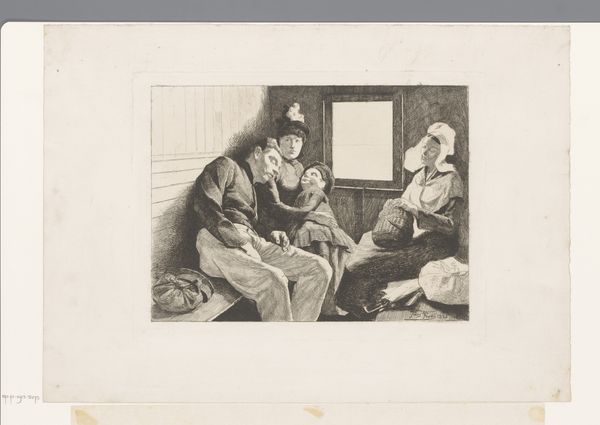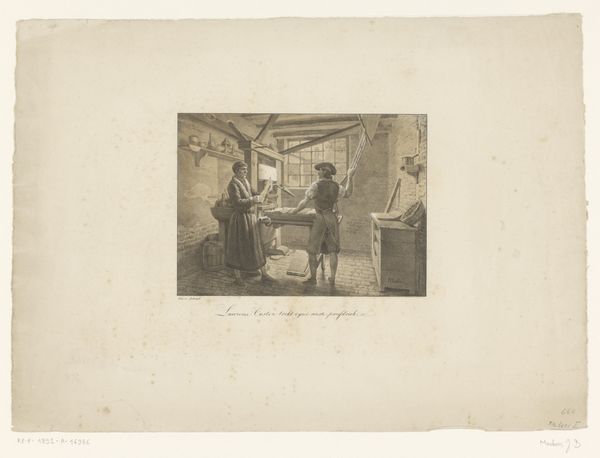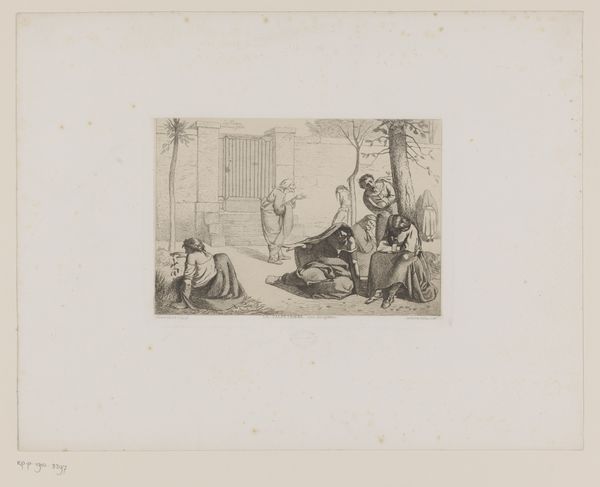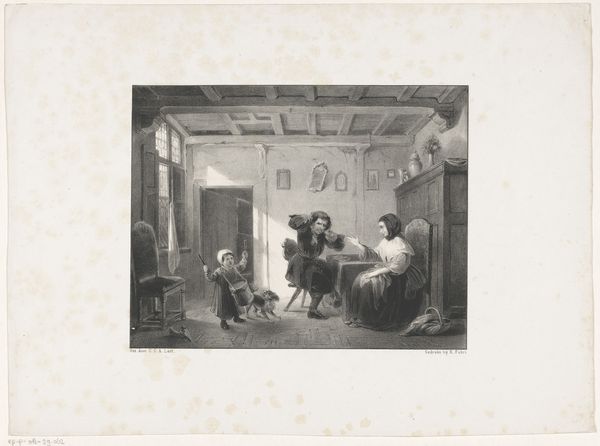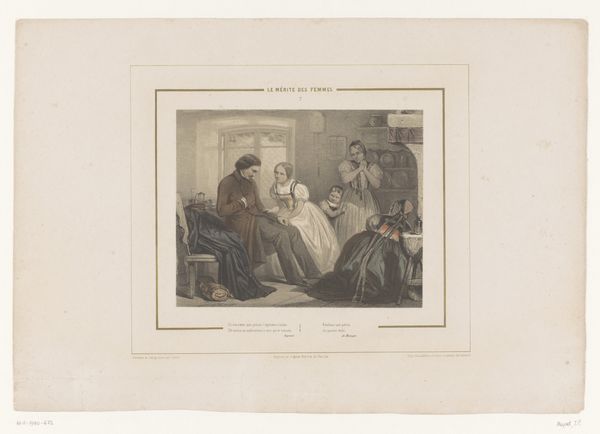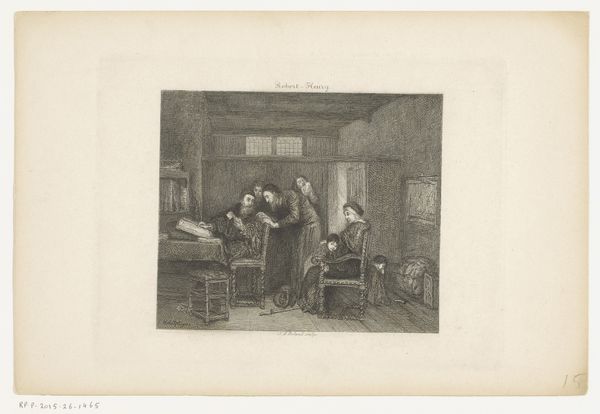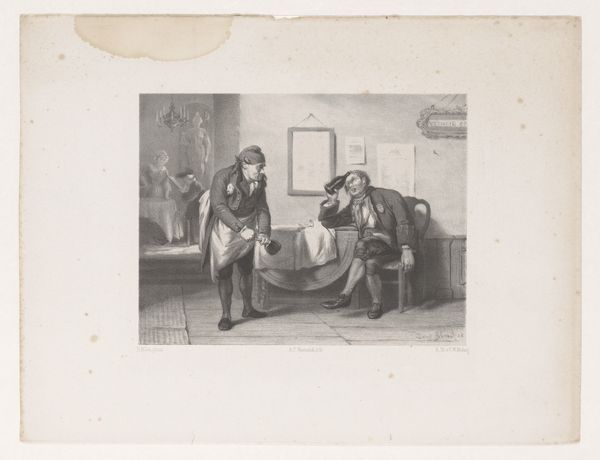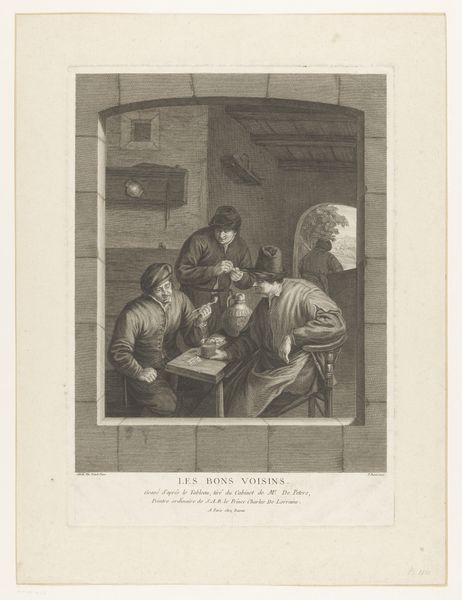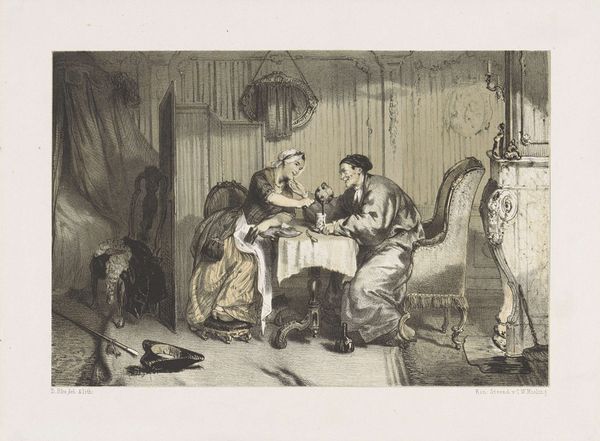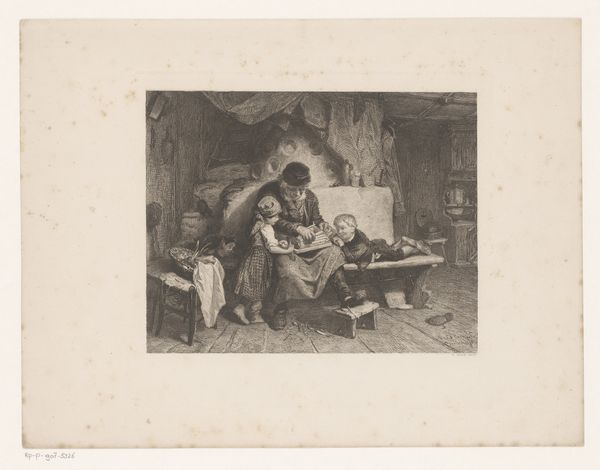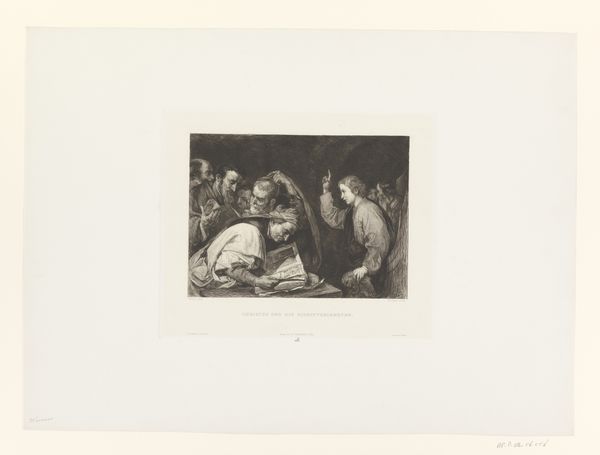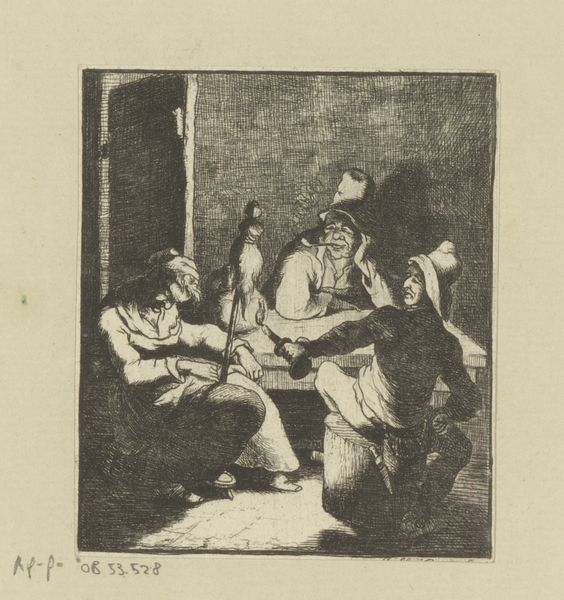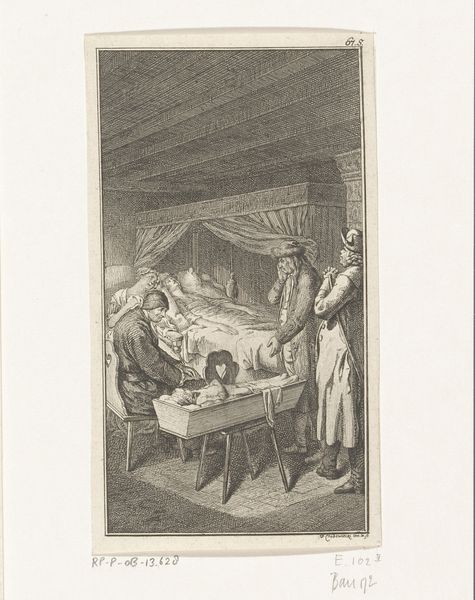
print, etching
#
portrait
#
16_19th-century
# print
#
etching
#
landscape
#
genre-painting
#
watercolor
#
realism
Dimensions: height 195 mm, width 256 mm
Copyright: Rijks Museum: Open Domain
Editor: So this is *Vier personen in een derdeklascoupé*, or *Four People in a Third-Class Compartment*, an 1888 etching by Frans Proost. There's a definite somber feeling looking at these weary travelers. What's your perspective on it? Curator: This print offers an insightful glimpse into the material conditions of 19th-century travel and social stratification. The artist's choice of etching is significant. Etching is after all a process inherently linked to reproduction and accessibility. This print gives access to a social reality. Editor: How so? Curator: The depicted 'third class' hints at limited means, journeys of necessity rather than leisure. Etching allowed Proost to depict such a scene affordably for wider circulation, almost a document of the realities often overlooked by more privileged classes. What details in the scene speak most clearly to this? Editor: I see it now, from the rudimentary luggage to the plain clothing, it paints a clear picture. The woman knitting – I imagine clothes for her family, or repairs…a kind of subsistence labor continuing even during travel. Curator: Precisely. The etching's lines themselves, a product of industrial process, mirror the repetitive, almost grinding nature of their existence. It is not simply a portrayal of a scene, but also a silent commentary of labour. Do you find this influences how you view it? Editor: Absolutely. I now see it as more than just a slice of life, but a statement on the lived experience of working-class people in that era, accessible thanks to the deliberate medium choice. Curator: Exactly. And through examining those processes, and understanding the conditions, we see what matters here: an act of preservation, a statement of socio-economic materiality.
Comments
No comments
Be the first to comment and join the conversation on the ultimate creative platform.
